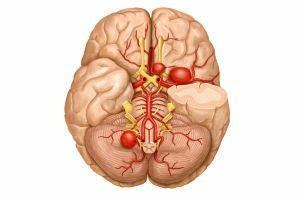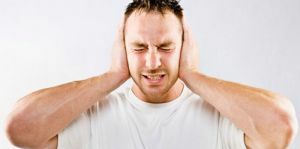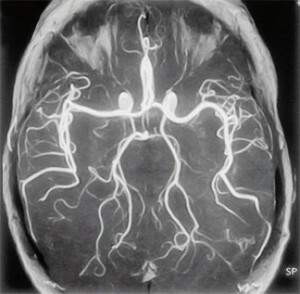 Cerebral vasospasm( cerebral) is a spasm of the middle cerebral arteries and other vessels that arises as a consequence of the appearance of pathological neoplasms on their walls.
Cerebral vasospasm( cerebral) is a spasm of the middle cerebral arteries and other vessels that arises as a consequence of the appearance of pathological neoplasms on their walls.
In a developing neoplasm, blood gradually accumulates, followed by a rupture and a sharp decrease in the diameter of the vessels.
Vasospasm belongs to the group of pathologies of acute circulatory failure. The duration of vasospasm reaches several days, without the onset of improvement and relief.
Causes of development of a violation of
The main reason for the development of cerebral spasm of the brain is called a disturbed regulation of the autonomic nervous system.
Most often, the cause of narrowing lies in the malfunctioning of the muscular layer of the vessel walls, thus disrupting the order of muscle work, and the muscles of the walls contract in a more rapid and prolonged rhythm. There are many reasons for this failure in muscle work.
Some diseases and conditions can help reduce arteries. Among them we can name:
- hypertensive disease;
- brain tumor;
- hydrocephalus;
- osteochondrosis of the upper spine;

- angina;
- blood clots and aneurysms of cerebral vessels;
- disease of the membranes of the brain;
- of kidney and thyroid disease;
- diabetes;
- craniocerebral trauma.
Associated causes of spasm can also be other factors, such as:
- bad habits( alcoholism, drug addiction, smoking);
- presence of constant stressful situations;
- excessive drinking of tea and coffee;
- constant lack of sleep;
- improper power;
- sedentary lifestyle;
- poisoning with poisonous substances;
- atmospheric phenomena.
Pathological neoplasms on the walls of blood vessels can cause narrowing of large arteries. Cerebral vasospasm happens as a result of rupture of an aneurysm( a tumor on the wall of the vessel inside which blood is collected).The spasm itself is the protective action of the body, in an attempt to prevent a re-hemorrhage.
One of the factors of the emergence of vasospasm can also be called congenital dystrophy of the shells of blood vessels. One of the modern causes of development of spasms of the brain is called a poor state of ecology. Life in large cities carries a danger in the form of polluted air, the presence of heavy metals in the water.
The frequent causes of cerebral vasospasm are hypertensive stroke and vascular malformations.
Symptoms of cerebral vasospasm
Suspected development of the disorder can be determined by certain symptoms. In this case, you need to seek medical help as soon as possible.
The most common symptoms of cerebral vasospasm:
- migraine;
- dizziness;
- sudden memory impairment;
- ringing and tinnitus;
- increased fatigue;
- sharp decline in performance.
 Cerebral vasospasm manifests itself unexpectedly, and its symptoms appear abruptly, it is possible to distinguish it from other types of spasms of the brain by the duration of the manifestation of symptoms. Symptoms do not disappear for several days, and become more intense.
Cerebral vasospasm manifests itself unexpectedly, and its symptoms appear abruptly, it is possible to distinguish it from other types of spasms of the brain by the duration of the manifestation of symptoms. Symptoms do not disappear for several days, and become more intense.
Deviations in the blood flow of the brain manifest themselves externally in such signs( the manifestation of one or another characteristic depends on the localization of the hemorrhage):
- muscle weakness in the half of the trunk that is opposite to the hemisphere with intracerebral hemorrhage;
- speech disorders;
- recognition problems;
- belated reaction;
- visual field defects;
- nausea;
- numbness of the extremities.
These symptoms are not unique, and may indicate the presence of other diseases. Identify and diagnose vasospasm of the vessels of the head can only be based on the results of the survey.
Diagnostic Criteria
It is necessary to conduct laboratory studies and computed tomography to exclude other diseases that can be systemic( hypotension, hypoxia, hyponatraemia), or neurological( re-hemorrhage, hydrocephalus).
You can diagnose vasospasm using a variety of techniques. These include: 
- cerebral angiography;
- conventional angiography;
- magnetic resonance tomography;
- measurement of cerebral blood flow;
- electroencephalogram;
- transcranial ultrasound dopplerography of cerebral vessels.
The most informative results can be obtained as a result of serial studies. Determining the presence of a violation in the vessels is difficult even for an experienced doctor, since the symptoms are not individual for this disease. For this reason, the diagnosis should be carried out carefully to accurately determine the presence or absence of cerebral vasospasm in the patient.
The clinician needs to thoroughly interview the patient to establish the most accurate clinical picture and the designation of all necessary examinations. The danger of this type of spasm lies in the fact that it can lead to ischemic disease of the brain, disability of the patient and even a lethal outcome.
Complex of therapeutic and preventive measures
Modern neurology and neurosurgery are actively engaged in studying ways of improving the methods of treatment of patients with cerebral vasospasm. Often, treatment includes medication( drugs aimed at slowing the production of serotonin).
To begin with, it is necessary to provide vasodilation( relaxation of the smooth musculature of the vessel walls) of the blood vessels.
 To ensure a reduction in the amount of circulating blood, saline solutions and colloidal agents are used. Thus, oral fluid intake is undesirable. The patients are then given Nimodipine, Phenylephrine, Dopamine or Dobutamine.
To ensure a reduction in the amount of circulating blood, saline solutions and colloidal agents are used. Thus, oral fluid intake is undesirable. The patients are then given Nimodipine, Phenylephrine, Dopamine or Dobutamine.
All prescription drugs should be avoided at the same time.
The second major method of treating vasospasm of vessels in the brain area is the surgical method - endovascular intervention. Both medical and surgical methods are aimed at stopping the narrowing of blood vessels. These two methods are complementary.
This is useful - recovery of cerebral vessels:
To protect yourself from the appearance of vasospasm, you need to pay special attention to your health and make a choice toward a healthy lifestyle.
Abandonment of addictions, proper diet, restriction or exclusion of caffeine and harmful foods will have a positive effect on the condition of the vessels. 
The daily diet should include cereal cereals, cereals, lean fish, freshly squeezed juices, vegetables, fruits, green tea, sour-milk products.
There are theories about the negative effect on the state of cholesterol vessels, but recently these data are being questioned by many researchers.
Also useful for the vessels will bring regular exercise and sports. Do not also forget about observing the regime of the day, full sleep and reducing the number of stressful situations. Following these recommendations will help restore the correct regulation of the vascular tone.



